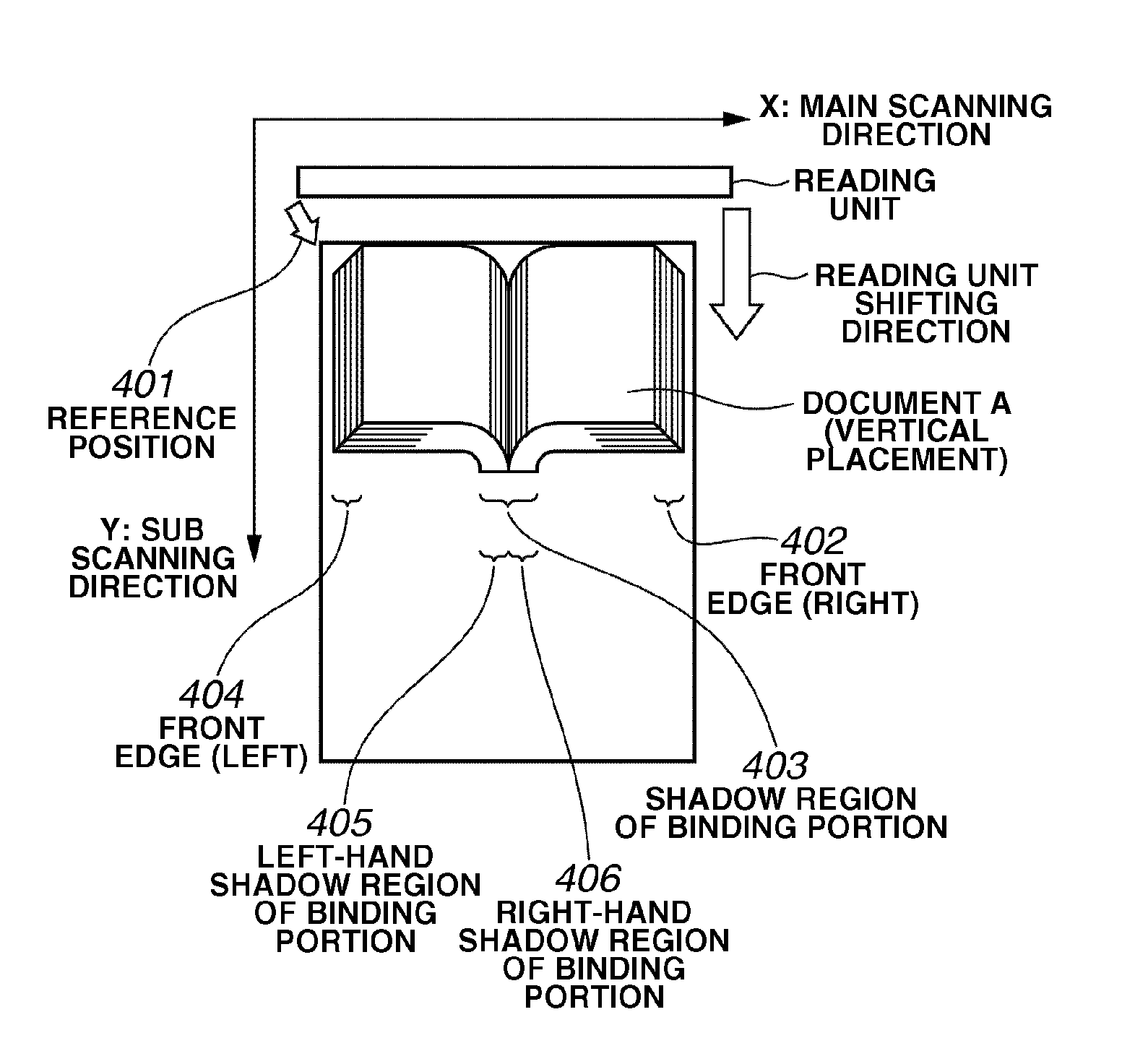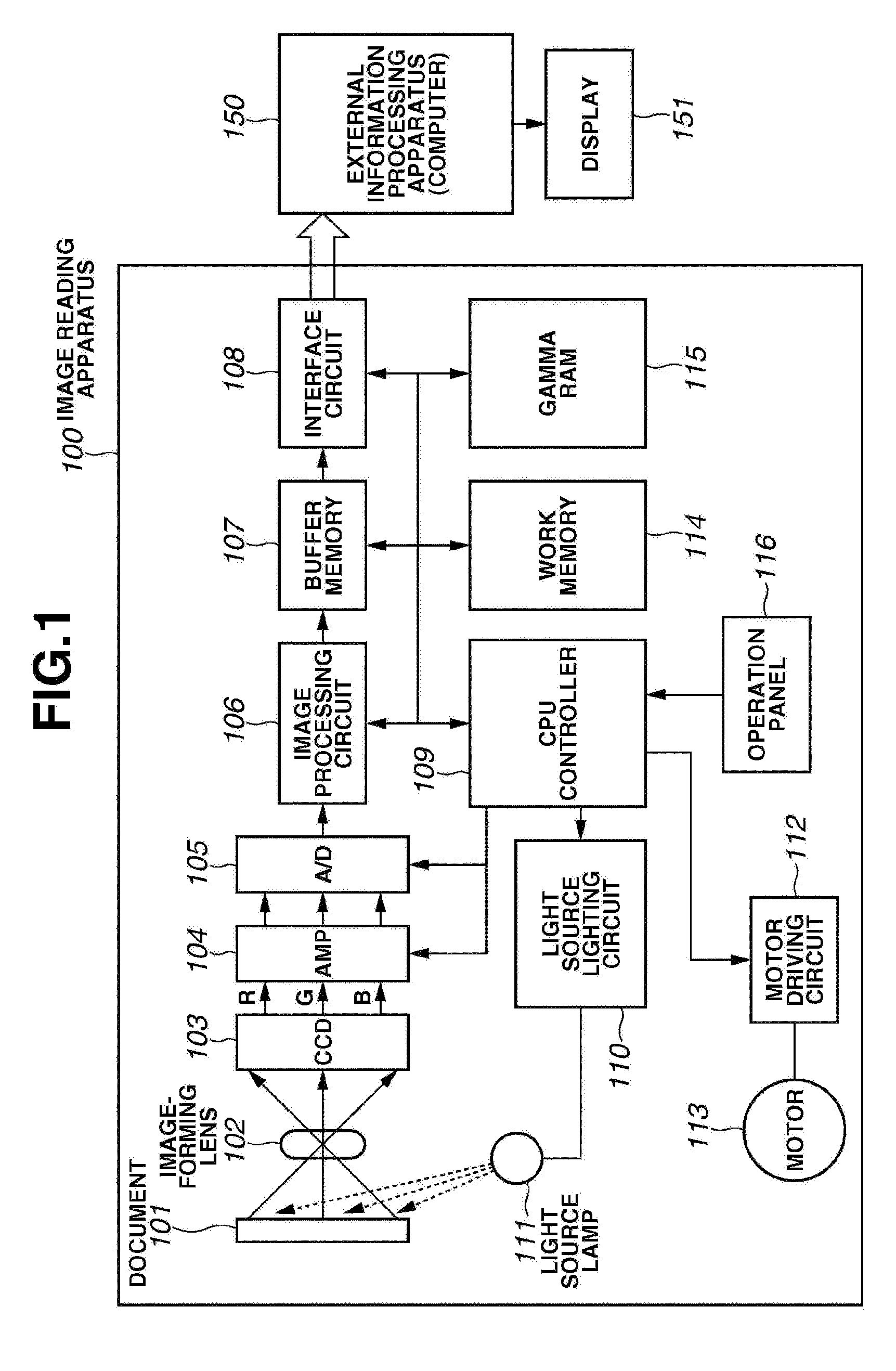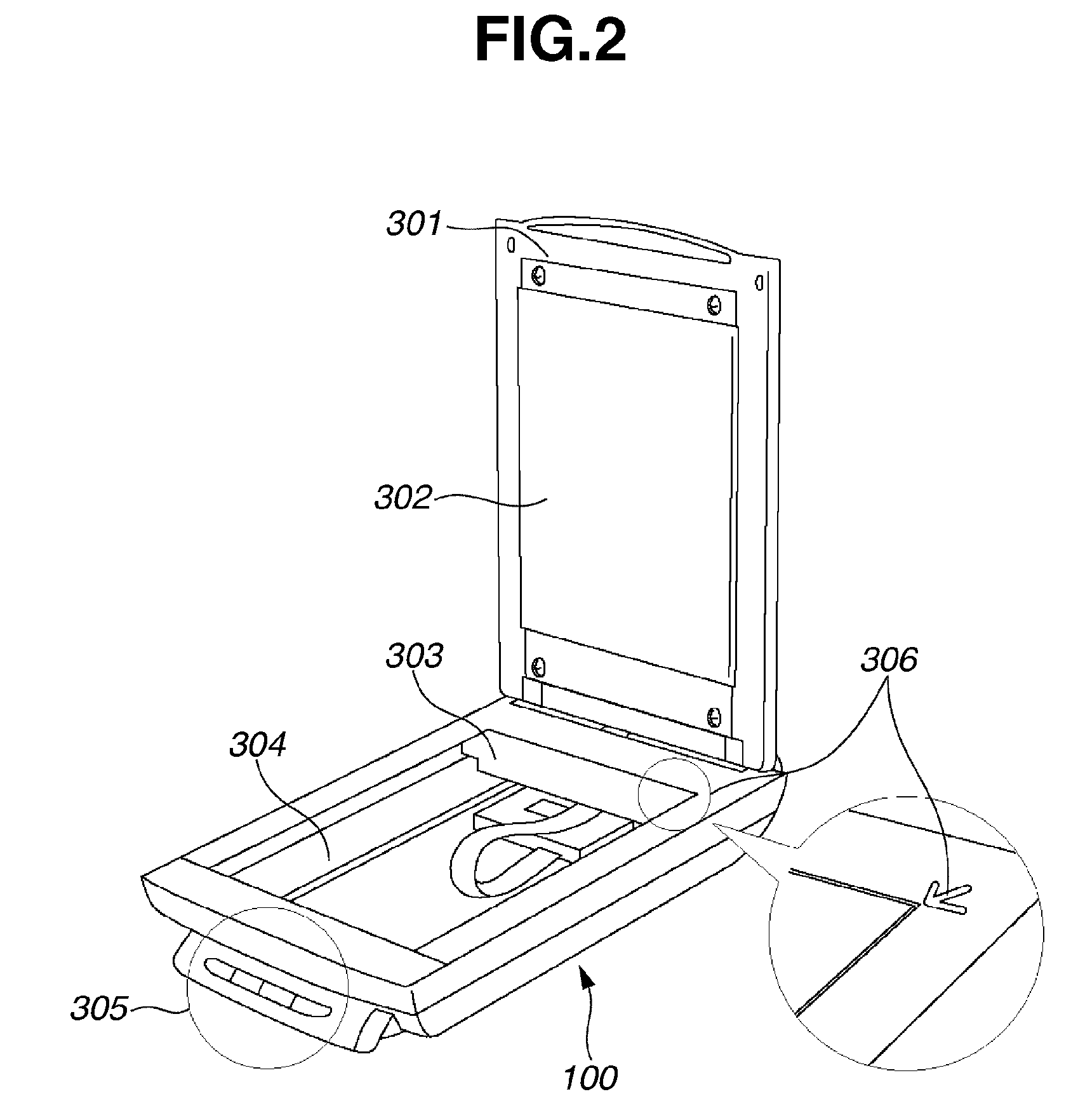Image reading apparatus
a reading apparatus and image technology, applied in the field of image processing methods, can solve the problems of large amount of toner or ink consumed by the copying machine, character recognition may not be correct, and the clearance between the binding portion may not be good,
- Summary
- Abstract
- Description
- Claims
- Application Information
AI Technical Summary
Benefits of technology
Problems solved by technology
Method used
Image
Examples
first exemplary embodiment
[0058]FIG. 1 is a block diagram illustrating an example arrangement of an image reading apparatus and an external information processing apparatus. In FIG. 1, an image reading apparatus 100 is operable to read a document 101 to generate image data. A light source lamp 111 illuminates the document 101. Reflection light having an intensity corresponding to the density of a document surface enters an image-forming lens 102 that forms an image on a line image sensor 103, such as a charge-coupled device (CCD) sensor or other solid-state image sensor. A light source lighting circuit 110 controls lighting of the light source lamp 111.
[0059]An amplifier 104 amplifies an analog image signal output from the line image sensor 103. A motor driving circuit 112 controls a driving motor 113 (e.g., a stepping motor) that drives an optical system. A central processing unit (CPU) controller 109 functions as a system control unit of the image reading apparatus 100. The motor driving circuit 112 output...
second exemplary embodiment
[0165]A second exemplary embodiment of the present invention is similar to the first exemplary embodiment in the arrangement including the image reading apparatus 100 and the PC 150 illustrated in FIG. 1. The PC 150 according to the second exemplary embodiment executes the processing for obtaining an image including luminance-corrected shadows of a binding portion and front edges of a book document, according to the flowchart of FIG. 5.
[0166]A calculation method according to an embodiment can obtain interlinear neighboring correction values in the analysis of a shadow of a binding portion.
[0167]FIG. 7 is a flowchart illustrating exemplary processing for calculating the interlinear neighboring correction value (image feature quantity) in the processing for analyzing the shadow of a binding portion and / or a front edge.
[0168]In FIG. 7, “i” is a variable indicting the pixel position in a first direction, and “j” is a variable indicating the pixel position in a second direction. The proc...
third exemplary embodiment
[0186]A third exemplary embodiment of the present invention is similar to the first exemplary embodiment in the arrangement including the image reading apparatus 100 and the PC 150 illustrated in FIG. 1. The PC 150 according to the third exemplary embodiment executes the processing for obtaining an image including luminance-corrected shadows of a binding portion and front edges of a book document, according to the flowchart of FIG. 5.
[0187]The present embodiment is applicable to a document image that includes top and bottom shadows of a book binding portion which are different in width, or an image of a slightly inclined book document that includes inclined shadows of a binding portion and front edges.
[0188]FIG. 14 is a flowchart illustrating exemplary processing for analyzing a V-shaped shadow of a binding portion of a book document placed on a platen which may be caused when a pressing force is not uniformly applied on the book document. If a book document is not uniformly pressed...
PUM
 Login to View More
Login to View More Abstract
Description
Claims
Application Information
 Login to View More
Login to View More - Generate Ideas
- Intellectual Property
- Life Sciences
- Materials
- Tech Scout
- Unparalleled Data Quality
- Higher Quality Content
- 60% Fewer Hallucinations
Browse by: Latest US Patents, China's latest patents, Technical Efficacy Thesaurus, Application Domain, Technology Topic, Popular Technical Reports.
© 2025 PatSnap. All rights reserved.Legal|Privacy policy|Modern Slavery Act Transparency Statement|Sitemap|About US| Contact US: help@patsnap.com



